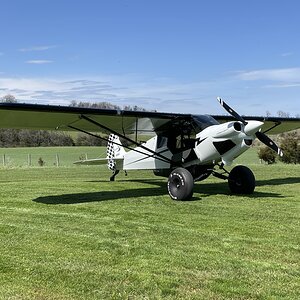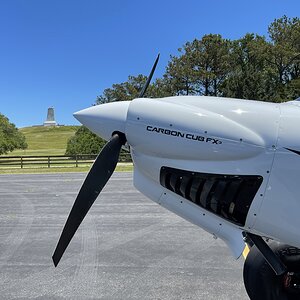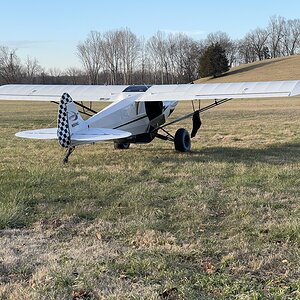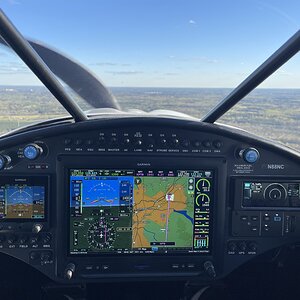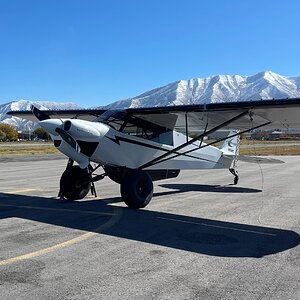Freebrd
Well-known member
- Joined
- Jun 17, 2003
- Posts
- 2,665
ASA Factored Higher Pilot Pay In Successful Delta Bid
05/04/2004
Pay rates most likely won't be the first discussion topic when pilots and
management at Atlantic Southeast Airlines (ASA) resume contracts talks today,
but airline executives factored higher salaries in their bid that ultimately
led ASA to capture the bulk of Delta Connection regional jet flying for the
next two years.
Delta awarded ASA 25 of 45 planes, with deliveries slated to start in the first
quarter of 2005 (DAILY, March 3).
"We would have not been correct if we had gone forward and not forecast some
increase in pilot compensations," ASA President Skip Barnette recently told The
DAILY at the carrier's Atlanta headquarters. "We had to realistically project
there would be some sort of increase in that."
Barnette explained one important issue in the bidding process was "what we were
going to commit to Delta from a block-hour cost [perspective] to fly these
airplanes, and so we put forth a bid that we thought was going to be very
competitive, and as it turned out, it was."
ASA's management also worked hard to explain to employees how important the
extra flying was to the carrier's future, Barnette said. "It was simple
mathematics that our growth was scheduled to end at the end of 2004," he
explained. "With no growth our company matures. We all mature up the pay scale.
Growth provides a backfill for those people moving up the pay scale, and the
people coming in at the lower pay scale over time does allow you to reduce your
unit costs."
Barnette credited Bombardier for making the CRJ-200 competitive in the
ownership element of the deal. "The ownership piece with Embraer had pretty
much been established," he explained. Delta awarded Chautauqua 13 more Embraer
ERJs (DAILY, March 3). "That ownership piece was probably more attractive than
Bombardier's ownership costs. Fortunately Bombardier stepped up to the table
and made the CRJ-200 a highly competitive platform with the ERJ," Barnette
said. Although he couldn't give details about the aircraft financing, he did
note, "There is no capital outlay on Delta's part or our part for the
airplanes."
Barnette said some of the carrier's recent growth came from Delta's downsizing,
either through ASA supplementing operations or completely replacing Delta in
other markets. "That can't continue for very long," Barnette said. "What has to
take place through 2005, where our growth is pretty much stable, is Delta needs
to deal with its cost structure so they can put together a fairly strategic
plan of growth." When that happens ASA could snap back to the growth patterns
in adopted in 2000 and 2001, Barnette said.
05/04/2004
Pay rates most likely won't be the first discussion topic when pilots and
management at Atlantic Southeast Airlines (ASA) resume contracts talks today,
but airline executives factored higher salaries in their bid that ultimately
led ASA to capture the bulk of Delta Connection regional jet flying for the
next two years.
Delta awarded ASA 25 of 45 planes, with deliveries slated to start in the first
quarter of 2005 (DAILY, March 3).
"We would have not been correct if we had gone forward and not forecast some
increase in pilot compensations," ASA President Skip Barnette recently told The
DAILY at the carrier's Atlanta headquarters. "We had to realistically project
there would be some sort of increase in that."
Barnette explained one important issue in the bidding process was "what we were
going to commit to Delta from a block-hour cost [perspective] to fly these
airplanes, and so we put forth a bid that we thought was going to be very
competitive, and as it turned out, it was."
ASA's management also worked hard to explain to employees how important the
extra flying was to the carrier's future, Barnette said. "It was simple
mathematics that our growth was scheduled to end at the end of 2004," he
explained. "With no growth our company matures. We all mature up the pay scale.
Growth provides a backfill for those people moving up the pay scale, and the
people coming in at the lower pay scale over time does allow you to reduce your
unit costs."
Barnette credited Bombardier for making the CRJ-200 competitive in the
ownership element of the deal. "The ownership piece with Embraer had pretty
much been established," he explained. Delta awarded Chautauqua 13 more Embraer
ERJs (DAILY, March 3). "That ownership piece was probably more attractive than
Bombardier's ownership costs. Fortunately Bombardier stepped up to the table
and made the CRJ-200 a highly competitive platform with the ERJ," Barnette
said. Although he couldn't give details about the aircraft financing, he did
note, "There is no capital outlay on Delta's part or our part for the
airplanes."
Barnette said some of the carrier's recent growth came from Delta's downsizing,
either through ASA supplementing operations or completely replacing Delta in
other markets. "That can't continue for very long," Barnette said. "What has to
take place through 2005, where our growth is pretty much stable, is Delta needs
to deal with its cost structure so they can put together a fairly strategic
plan of growth." When that happens ASA could snap back to the growth patterns
in adopted in 2000 and 2001, Barnette said.

